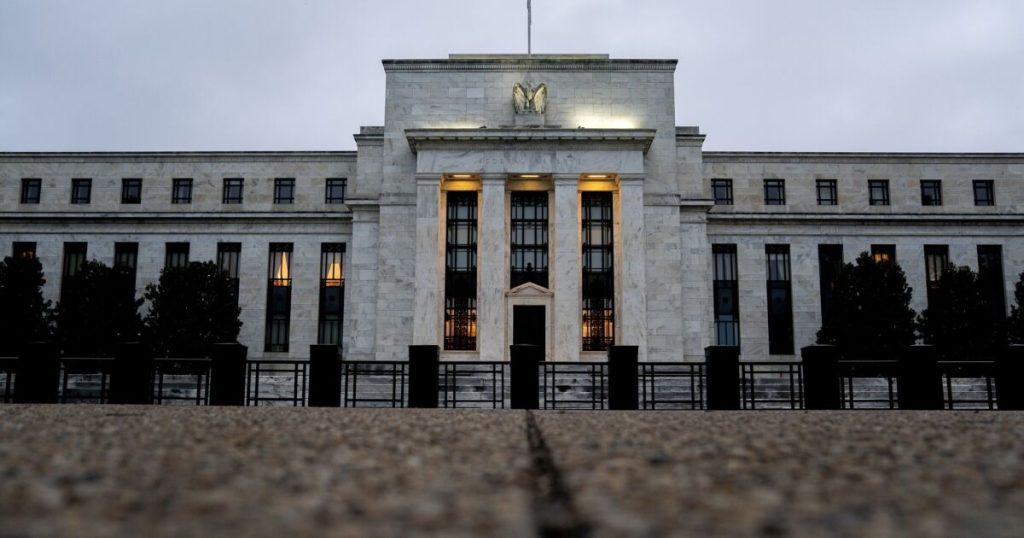Most of the country’s largest banks are poised to see flat or lower capital requirements next year after performing well in this year’s Federal Reserve stress test, but ongoing efforts to reform its annual exam practices could complicate how much lower those requirements will ultimately be.
Overall, banks registered their best performance since new stress testing protocols were rolled out in 2018, with a maximum aggregate decline in common equity tier 1 capital of 1.8% under the test’s severe scenario, down significantly from an average of 2.8% last year.
It was also the lowest total loss rate on record since 2020, when banks were projected to lose 2.1% of their CET1 capital.
Fed Vice Chair for Supervision Michelle Bowman said the results demonstrate both the resilience of the nation’s largest banks and just how volatile the annual stress test can be. In a statement released alongside the findings, she said it provides further evidence that changes are needed to the year test.
“Large banks remain well capitalized and resilient to a range of severe outcomes,” Bowman said. “One way to address the excessive volatility in the stress test results and corresponding capital requirements is for the Board to finalize the proposal that would average two consecutive years of stress test results, which was released in April.”
Should that proposed change be implemented largely as-is, the Fed would incorporate the two-year averaged findings — which would reflect a 2.3% decline in aggregate CET1 capital — into next year’s stress capital buffer, or SCB, assessments.
Because the rule likely could not be finalized until late this year, tested banks will be assigned capital buffers based on this year’s findings alone for the fourth quarter of 2025, but then a new charge, based on the averaged results, would go into effect in 2026. The Fed said it was too far along in the development of its 2025 scenario to change it when the proposed changes were published in December.
The results are in
The SCB, which comes with a minimum capital requirement of 2.5%, is determined by a bank’s total decline in CET1 capital during the severe scenario relative to the previous year. Under this year’s scenario, only one bank — TD Group — saw greater losses in 2025 than in 2024, meaning SCB charges would likely be flat or potentially lower in 2026 for the other 21 banks.
However, including the 2024 results — which included some of the most significant losses in recent years — could result in some banks facing higher capital requirements, though that will not become official until the Fed announces next year’s SCB requirements in August.
Individual banks are free to announce how they will factor this change into their capital plans for next year as soon as next Tuesday. Banks are afforded a window in which they can contest their stress test results and provide more accurate data ahead of the August SCB announcement.
No banks failed this year’s test, holding consistent with a years-long trend of universal passage.
BMO Financial Group was the only bank to see its CET1 capital dip below 8% under the severe scenario. The Canadian bank’s capital fell as low as 7.8%, which is still well above the 4.5% minimum.
Deutsche Bank registered the biggest capital decline in the exam, dropping 11 percentage points, from 23.7% to 12.7%. The performance was still an improvement from 2024, when its capital level dropped by 13 percentage points.
The four largest banks all improved their performance year to year, with Wells Fargo posting the biggest improvement, going from a 3.3 percentage point decline in 2024 to a 1 percentage point decline this year. JPMorgan Chase registered a decline of just 1.5%, down from 2.5%, Bank of American a decline of 1.7%, down from 2.7% and Citi fell 3.2%, down from 3.7%.
Great expectations
Market analysts broadly expected banks to perform stronger in this year’s test than in last year’s. The Fed aimed to make the stress scenarios it used in this year’s test less severe than those
This year’s stress test marks the end of an era for Fed regulatory oversight. The central bank is in the process of reforming its stress testing practices to provide greater transparency around the models and scenarios it uses to examine bank resilience and set capital expectations. It will also average findings over the past two years to avoid drastic changes in capital requirements from year to year.
Changing the formula
The Fed undertook this reform effort both as the result of leadership changes — namely the rise of
“The framework of administrative law has changed significantly in recent years,” the Fed stated. “The board analyzed the current stress test in view of the evolving legal landscape and determined to modify the test in important respects to improve its resiliency.”
Indeed, several banking groups
